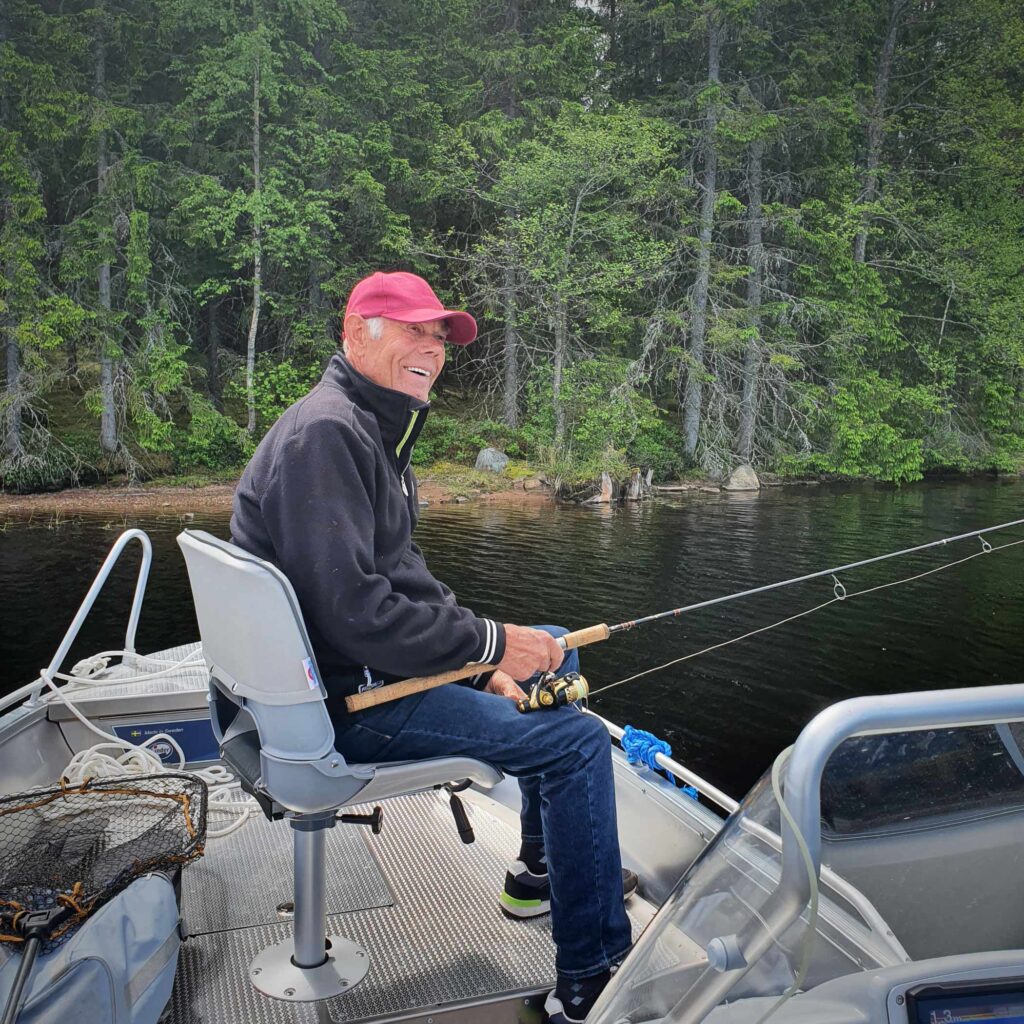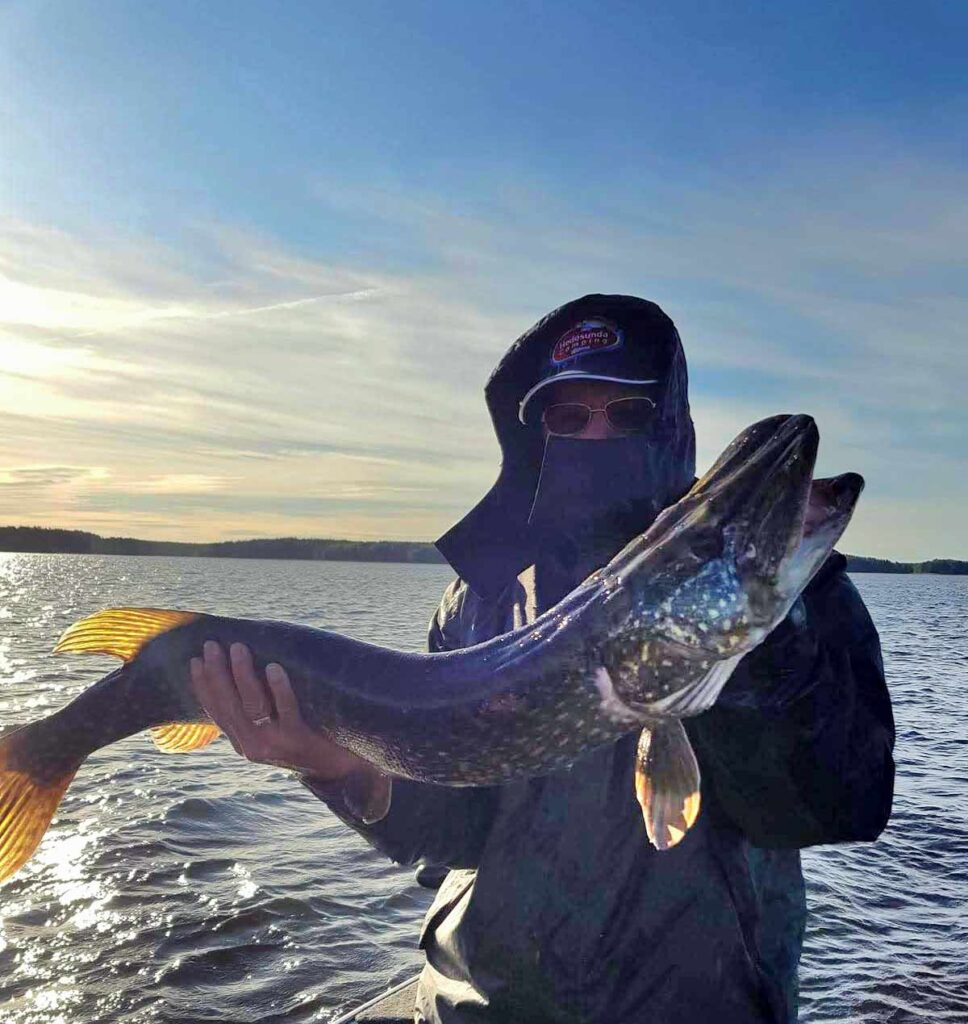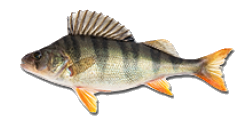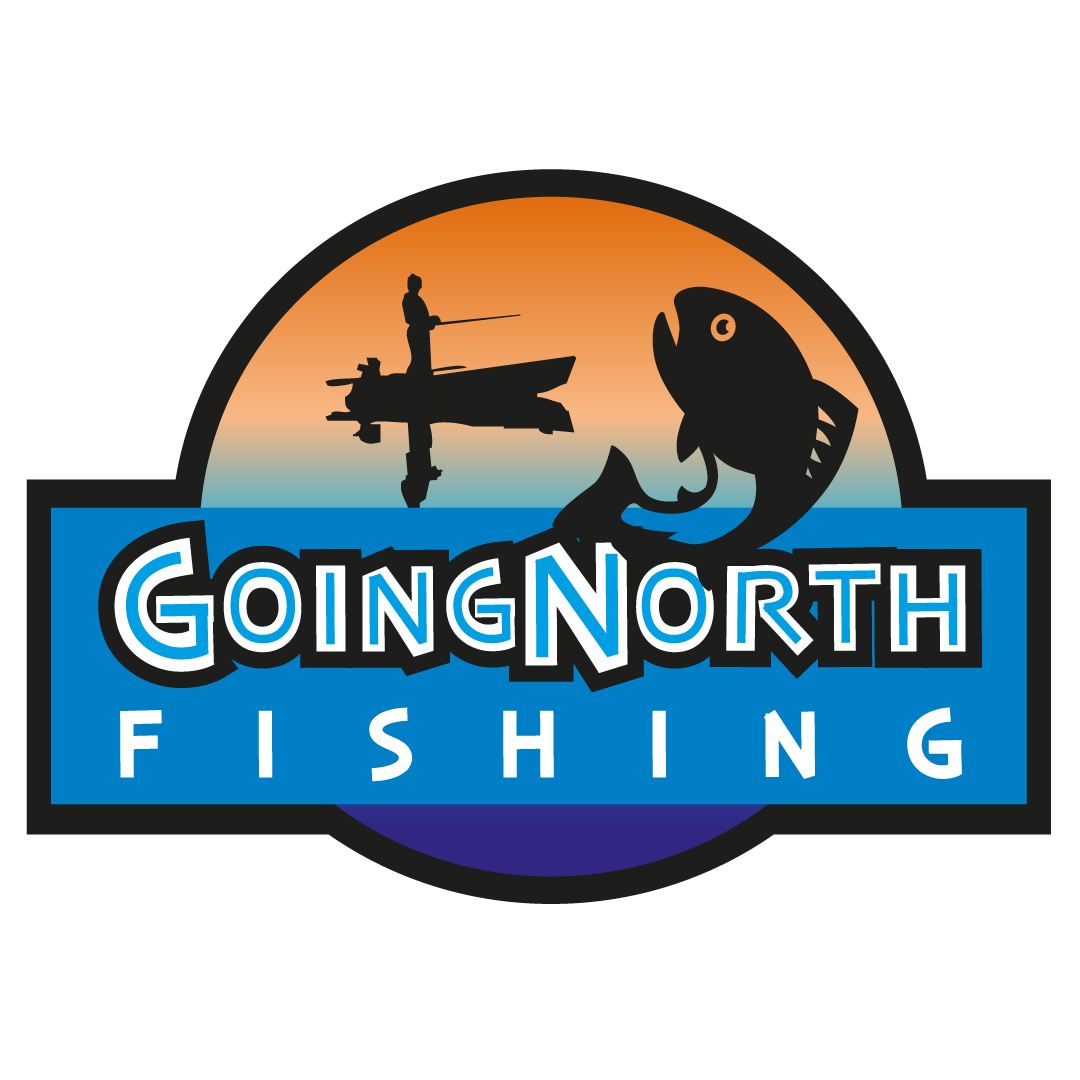You fish in the Gräsmången, a relatively large and deep lake. The Gräsmången is surrounded by beautiful natural surroundings.

From Fyrbo Guesthouse you have a direct view of Lake Gräsmången with its crystal clear water. Large pike and perch are present here and all kinds of white fish. Try baits with natural colors such as green and blue in the summer and something bolder, for example orange in the spring and autumn. Unlike the Netherlands where you are not allowed to fish with live bait, you are allowed in Sweden.
In summer when the water warms up, you should not forget to try also on the open water, where pike and perch hunt for small fish swimming on the surface, very exciting during beautiful and warm summer evenings.
The pike lives alone and defends its feeding grounds, which it prefers to keep near plant stands where there is sufficient bait. In between he makes hunting trips, and sometimes pauses at e.g. a growl. Vary your fishing and look for the pike. The really big pike are usually between 5 and 10 meters deep, but normal pike can sometimes go very shallow. Therefore, fish on the surface, near the coast and around shallow water, rocks and deep edges. If the wind has been blowing in one direction for several days, pike sometimes gather on the side where the wind is blowing and wait for prey with their heads “against” the wind.

Which fish in Sweden
In Sweden you can catch about 37 types of fish, ordinary and noble species. The largest of these are pike, zander and bass, salmon, trout and grayling in fast flowing water.
Pike

The pike is an outspoken predatory fish and its only natural enemy is usually other larger pike. A pike can ingest a fish that is up to half its own size. In general, the pike mainly eats smaller fish, but if given the chance, it also eats other animals, e.g. small birds, voles or reptiles.
fishing tips
The pike lives alone and defends its feeding grounds, which it prefers to keep near plant stands where there is sufficient bait. In between he makes hunting trips, and sometimes pauses at e.g. a growl. Vary your fishing and look for the pike. The really big pike are usually between 5 and 10 meters deep, but normal pike can sometimes go very shallow. Therefore, fish both on the surface, near the coast and around shallow water, reeds and deep edges. If the wind has been blowing in one direction for several days, pike may gather on the side where it is blowing and wait for its prey with its head “against” the wind.
Pike fishing with lures
Most anglers fish for pike with lures. The lure is cast in with the casting rod and slowly reeled in. By bringing in the lure, the lure will move and imitate a fish. The movement of the lure is not just going forward. Lures are attractive to pike precisely because it twists, shakes or waddles. In this way the lure imitates, as it were, a sick fish and the pike catches the eye more quickly. There are different types of lures that you can use for pike fishing. Which lure works best depends largely on the circumstances. In shallow water you often catch the best pike with floating plugs or spinners. Deep-diving plugs, sinking plugs and shads work best in deep water. The color you choose for pike fishing can determine success. Natural colors often work well in clear fishing water. If the fishing water is cloudy, it is better to choose lures with a bright color.
Pike fishing with dead bait
Pike fishing with dead bait means that as a pike angler you use a dead but fresh bait fish as bait. Especially large pike can be caught with dead bait. This is because catching a dead baitfish costs the pike little energy. This is important for the larger and heavier pike because they have to eat a lot to keep their energy up. These pikes will therefore be careful with their energy. Bait fish that are great for pike fishing are the roach and blei. There are several ways to fish with dead bait. You can offer the baitfish with lead on the bottom or on a float. With lead on the bottom you fish for pike like many carp anglers do. You throw in your baitfish and wait for it to be caught by the pike. An electronic bite alarm indicates when you have a bite. Fishing for pike with the float means fishing by sight. You ensure that the distance between the float and the baitfish is such that the baitfish hangs just above the bottom of the fishing water. Preferably, the baitfish takes up a horizontal position so that it appears as if it is floating normally through the water. If you are fishing for pike with dead bait and you have a bite, it is important not to wait too long before hitting. Strike a maximum of 10 seconds after the bite. This prevents the pike from swallowing the baitfish.
Pike fishing with live bait
In Sweden you can still fish for pike with live bait. Most pike anglers do this with a float. The baitfish is hooked into its back and thrown in along with the float. To keep the baitfish at the right depth you can use a lead of a gram or 10 to 15. As soon as the pike takes the baitfish, he will pull the float under and the angler must catch on. Just like with dead bait pike fishing, don’t wait too long. Switch on after a maximum of 10 seconds. As a good baitfish it is best to use a live roach or blei. Be careful not to let the baitfish swim too close to aquatic plants or obstacles. Then you have a chance that he will swim himself. And to properly store and transport the bait fish, a bait kettle with an oxygen pump is recommended. This keeps the bait fish in excellent condition.
Baars

De baars is een typische roofvis die vaak in scholen jaagt. Als je scholen bange kleine vissen in het oppervlak ziet springen, kan er een grotere baars zijn die kleine vissen achtervolgt! Als je er een hebt, is de kans groot dat je er meer krijgt, profiteer ervan en wees er snel bij voordat de school naar nieuwe jachtgebieden gaat.
fishing tips
De beste visserij op baars is tijdens de hoogzomer en vroege herfst. De vis houdt van warm water en gaat vaak naar plekken waar hij kan staan en zonnebaden, b.v. op relatief ondiep water bij vegetatie en riet, omgevallen bomen en vazen, waar ook volop voedsel is.
Baars vissen met de worm
De worm is zonder twijfel het oudste en meest bekende aas om baars mee te vangen. Zowel mestpiertjes als de wat grotere dauwwormen zijn prima aas om mee te baars vissen. De meeste sportvissers doen dit door met een werphengel en dobbermontage te vissen. Een vislijn met een dikte van 16/00 en een dundradige langstijlige haak in de maat 4 of 6 maken de uitrusting compleet.
Bij het baars vissen met wormen is het zaak om de wormen net boven de bodem aan te bieden. Het kan hierbij geen kwaad om de wormen af en toe wat te bewegen. Dit doe je door met de hengeltop de dobber wat tikjes te geven. Om de baars extra te lokken kan je wat stukjes worm in het water gooien. Dit trekt de baars aan. Ook lokvoer kan wel eens helpen maar vergeet niet dat je dan ook andere vissoorten aantrekt. Als je echt wilt gaan baars vissen dan is het wellicht beter om dit achterwegen te laten.
Baars vissen met spinners
Spinners zijn een erg goed kunstaas om mee te vissen op baars. Vooral wat kleinere spinners met een rode kleur doen het goed. Gecombineerd met een niet al te stugge spinhengel, een goede werpmolen, een dunne gevlochten lijn of een nylon lijn van 18/00 vormen ze een gedegen uitrusting om te gaan baars vissen. Is de kans groot op snoek dan kan het geen kwaad om ook een onderlijntje te gebruiken. Dit schrikt de baarzen echt niet af en je voorkomt dat een snoek er met je spinner vandoor gaat. Probeer de spinners op verschillende dieptes te vissen. Wat onregelmatigheden in de snelheid en het heen en weer bewegen van de hengeltop (dit kan verticaal en horizontaal) zorgen regelmatig voor succes bij het vissen op baars.
Baars vissen met pluggen
Baars is een echte rover en niet bang om ook wat grotere vissen te pakken. Vandaar dat met name de wat grotere baars zich goed aan kunstaas pluggen laat vangen. Pluggen met een lengte van 4 tot 7 centimeter zijn prima om mee te baars vissen. Vooral pluggen met wat fellere kleuren doen het goed op baars, maar ook pluggen met baars kleuren en baars strepen gooien vaak hoge ogen. Dit komt omdat de baars net als de snoek een kannibaal is en graag kleinere soortgenoten eet. Let er wel op dat je de keuze voor je plug afstemt op de diepte van het viswater. Bij ondiep water kies je drijvende of ondiep duikende pluggen. Bij diep viswater kies je zinkende of diep duikende pluggen.
Voordat je gaat vissen denk aan je algemene visuitrusting:
- Telefoon of camera om de gevangen vissen vast te leggen
- Wind- en waterdichte kleding/warme onderkleding/warme schoenen
- Anti-insectenspray
- Zonnebril, het liefst polariserend
- Zonnebrandcrème
- Pet
- Materiaal/benodigdheden (hengels, pluggen, vislijn, langbektang, etc) checken voordat je gaat vissen
- Schepnet
- Voldoende eten/drinken meenemen.
